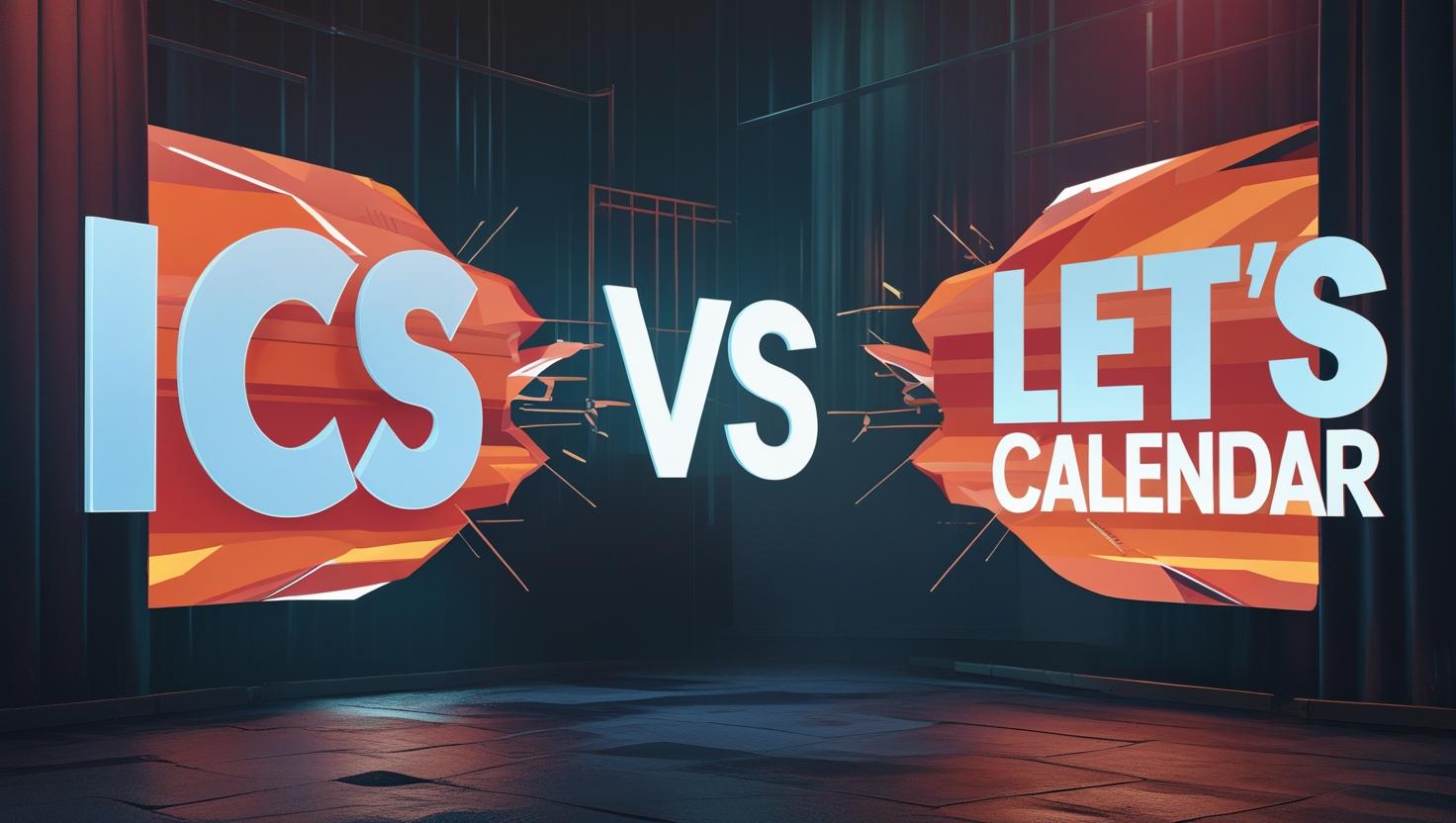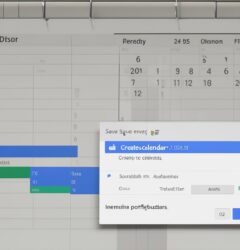- Email: [email protected]
- phone: +44 (0) 203 916 5117
17 Jul

ICS vs Let’s Calendar: Why You Need More Than Just a Calendar File
In a world where virtual meetings, webinars, and conferences have become the norm, sending a calendar file invite is the first step to creating engagement. It sets the tone, builds anticipation, and ensures attendance.
Many organizations still rely on basic calendar files like .ics, assuming it's enough. But the reality is that static files don't offer the features needed to manage modern events effectively.
Enter Let’s Calendar, a powerful alternative that helps you send, personalize, track, and scale invites across your audience. In this blog, we compare ICS files vs. Let’s Calendar, and show why you need more than just a download link.
What Is an ICS File? Pros and Pitfalls
You might be wondering, what is ICS file format? It’s a universal calendar file type (.ics) that works across platforms like Google Calendar, Apple Calendar, and Outlook. It contains event details like date, time, location, and description.
Pros:
- Works across major calendar platforms
- Easy to generate
- No tech expertise required
Cons:
- No RSVP tracking or analytics
- No personalization
- No real-time updates
- Not scalable for bulk or segmented invites
While an ICS file can help users manually add an event to their calendars, it’s a one-time solution with no room for flexibility.
The Problems with Static Files in a Dynamic World
Events evolve. Schedules shift. Speakers cancel. Static calendar files don’t.
If you send an .ics file to 1,000 invitees and later change the session link, you’re stuck resending a new file and hoping people actually open and update it. Most won’t.
- No two-way communication
- No updates in real time
- No accountability or delivery tracking
That’s a huge problem when you’re managing important client webinars or executive roundtables.
Enter Let’s Calendar: Built for Modern Meetings at Scale
Let’s Calendar is more than just a calendar invite generator. It’s a complete system for event scheduling, bulk delivery, personalization, and tracking.
Benefits over ICS Files:
- Send thousands of invites at once
- Personalize calendar descriptions for each recipient
- Track delivery, opens, clicks, and RSVPs in real time
- Sync updates instantly to attendees’ calendars
- Automate calendar invites for meetings using Zapier, CRMs, or CSV uploads
It’s especially powerful for marketing and event teams running high-stakes events like webinars, investor calls, training programs, or client onboarding meetings.
Key Feature Comparison Table
|
Feature |
ICS File Format |
Let’s Calendar |
|
Works across Google/Outlook/Apple |
✅ |
✅ |
|
RSVP Tracking |
❌ |
✅ |
|
Personalization per Invitee |
❌ |
✅ |
|
Bulk Sending |
❌ |
✅ |
|
Update Sync |
❌ |
✅ |
|
Analytics |
❌ |
✅ |
|
Automations |
❌ |
✅ (Zapier, CSV, CRMs) |
The chart makes it clear: If you’re still using static ics file format for modern virtual events, you’re missing out on features that truly drive engagement and success.
When Static Works (and When It Absolutely Doesn’t)
Static .ics files may be acceptable for:
- Personal reminders
- One-on-one informal meetings
- Non-critical invites
But they fail in scenarios like:
- Webinars with dynamic content
- Conferences with breakout tracks
- Meetings needing attendee segmentation
- Events requiring delivery and RSVP tracking
Let’s Calendar is built exactly for these high-impact scenarios.
Personalization is the New Standard
In a world of generic digital noise, personalization wins. When an invite includes your name, your meeting goal, and the correct timezone, you’re far more likely to attend.
Let’s Calendar enables 1:1 calendar invites at scale:
- Add invitee name or company in the title or description
- Include track-specific links
- Mention personalized content (e.g., "Hi John, here's your demo link")
Unlike a basic add calendar download, it becomes a mini landing page designed just for them.
Scaling Made Easy: From 10 to 1 Million Invites
Organizing a webinar with 1000+ attendees? Managing 20 regional client meetings in a week?
Let’s Calendar makes it effortless:
- Upload contacts via CSV
- Connect to your CRM
- Use Zapier to trigger invites
- Automate calendar invites for meetings with custom flows
You can even include one-click addevent or add to event links that auto-sync across platforms.
Real-Time Edits and Live RSVP Tracking
Need to change a meeting time? Update a speaker bio? Share a new Zoom link?
Let’s Calendar lets you edit any event detail and it syncs instantly to the attendee’s calendar. No re-sending. No confusion.
Plus, you can:
- Monitor RSVP responses
- See who opened or ignored your invite
- Measure join rate vs. attendance rate
All things the ics file simply can’t do.
Step-by-Step: How to Replace ICS with Let’s Calendar
Adding events with Let’s Calendar:
- Log into your Let’s Calendar dashboard
- Create a new event with title, time, description, links
- Upload contacts or connect a data source (Zapier, CRM, CSV)
- Customize calendar description per recipient (optional)
- Send or schedule delivery
Attendees receive:
- Personalized calendar invite
- Smart RSVP buttons
- One-click add event google calendar, Apple, or Outlook options
No more missed events because users couldn’t add event on calendar correctly.
Bonus: Prevent “Can’t Add Event” Frustration
Many users complain they can’t add events to calendar because of compatibility or file issues. Static .ics files may not open on older phones or unconfigured apps.
Let’s Calendar avoids this by:
- Using calendar-native links
- Detecting user device (Google, Apple, Outlook)
- Sending a smart invite tailored to the user's environment
That means fewer support tickets and better attendance rates.
Final Verdict: Go Beyond the File
The .ics file format is a relic of the past. For modern webinars, client meetings, and online conferences, you need a system that adapts to your audience and scales with your growth.
Let’s Calendar helps you:
- Send personalized, trackable invites at scale
- Update events in real time
- Track RSVP and engagement
- Improve attendee turnout and experience
Call to Action:
Ready to move beyond static invites?
Whether you’re managing 10 meetings or 10,000, Let’s Calendar gives you the control, personalization, and insights you need.









Recent Comments